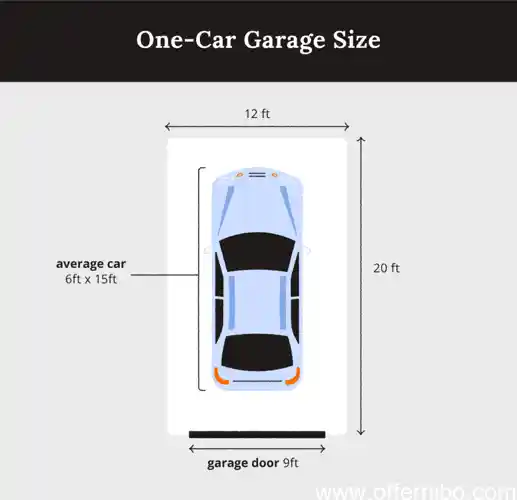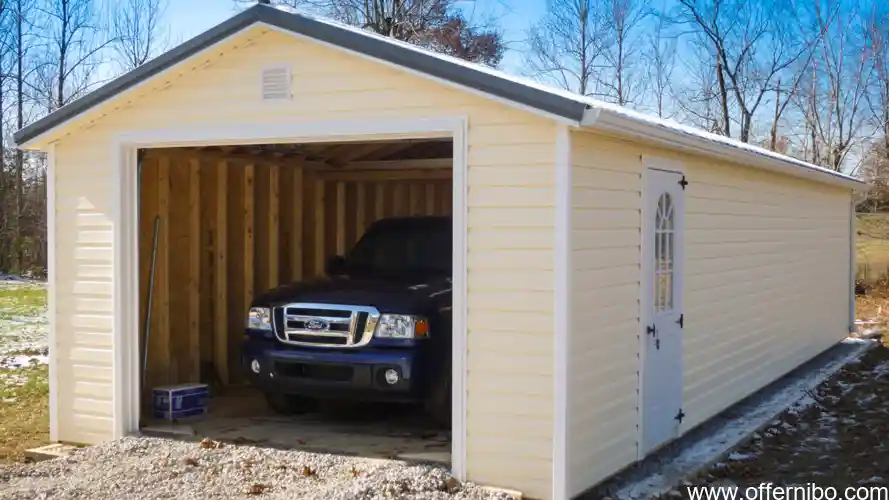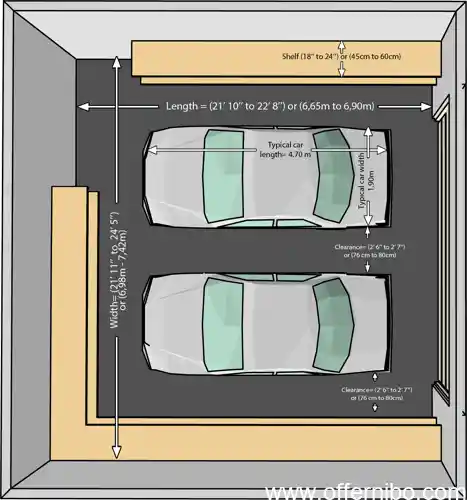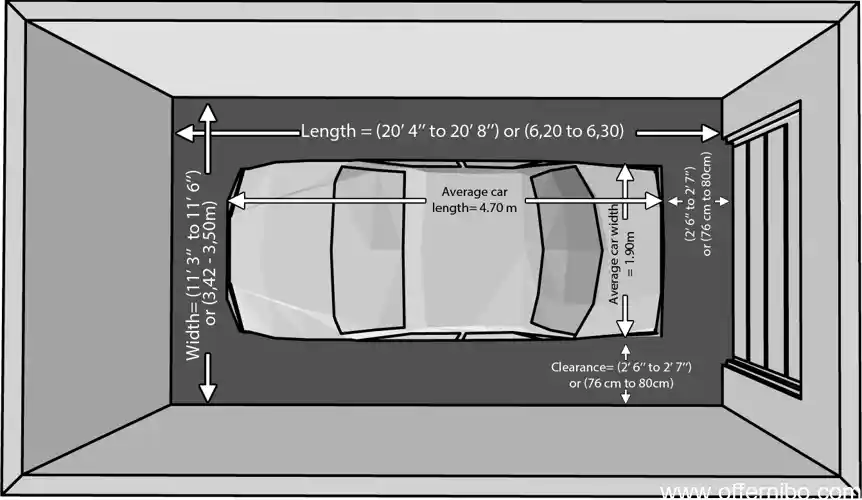**Unlocking the Secrets of Garage Size: A Comprehensive Guide to Determining the Perfect Fit**Are you embarking on the exciting journey of building or renovating your garage? Determining the optimal dimensions is crucial for accommodating your vehicles, storage needs, and ensuring a functional workspace. In this comprehensive guide, we’ll delve into the world of garage size, providing you with the knowledge and tools to make an informed decision about the ideal square footage for your needs.We’ll guide you through every step of the calculation process, ensuring accuracy and efficiency. From measuring length and width to understanding the difference between square feet and square meters, we’ll empower you with the knowledge to determine the precise size you need. Beyond square footage, we’ll explore the factors that influence garage size, such as vehicle type and storage requirements. Whether you’re storing a compact car, a spacious SUV, or an array of tools and equipment, we’ll help you assess your specific needs and determine the optimal size. We’ll also delve into the art of maximizing garage space, providing smart storage solutions for efficient utilization. By optimizing vertical space, utilizing wall-mounted shelves, and employing creative organizational techniques, you can transform your garage into a highly functional and organized workspace. Our comprehensive guide will equip you with the knowledge to make an informed decision about your garage size. By considering all the factors we discuss, you’ll be able to create a garage that perfectly aligns with your needs and enhances your home’s functionality.
Uncover the Optimal Garage Size: Determining the Space You Need

As you embark on the journey of designing or renovating your garage, determining its optimal size is crucial. It’s like planning a trip—you don’t want to end up with a space that’s too cramped or too vast. Understanding your needs and considering various factors will guide you towards finding that perfect balance. Let’s delve into the intricacies of garage size determination, ensuring you have a space that seamlessly accommodates your vehicles, storage requirements, and future aspirations.
Calculating Square Footage: A Step-by-Step Guide

When it comes to your garage, bigger isn’t always better. Finding the right balance between functionality and space can help you create the perfect parking and storage solution. To get started, you’ll need to calculate the square footage of your garage. This may seem like a daunting task, but with our step-by-step guide, you’ll be measuring like a pro in no time. Just grab a measuring tape and follow our simple instructions to determine the exact square footage of your garage. Once you know the dimensions, you can start planning for the optimal layout and storage solutions that will help you make the most of your space.
Measuring Length and Width Accurately
Figuring out how much space your garage needs can be like solving a puzzle – you have to consider the pieces that fit inside. When it comes to one-car garages, knowing the square footage is key. Imagine your garage as a blank canvas, ready to accommodate your vehicle and all its companions. To calculate the square footage, grab a measuring tape and follow these simple steps: measure the length and width of the space, then multiply those numbers together. It’s like baking a cake – you combine the ingredients (length and width) to get the final result (square footage). The average one-car garage ranges from 12×20 to 14×24 feet, giving you approximately 240 to 336 square feet of space to work with. Now that you have the measurements, you’re one step closer to creating a garage that fits your needs like a glove.
Understanding the Difference Between Sq Ft and Sq M
If you’re wondering how many square feet a one-car garage typically measures, you’re in the right spot. Calculating square footage for a garage is a simple math problem that anyone can master. Let’s break it down into a step-by-step guide so you can determine the optimal garage dimensions for your needs. We’ll also explore some additional considerations beyond square footage that can impact your garage’s functionality and make it a truly valuable space.
Factors Influencing Garage Size: From Vehicle Type to Storage Needs

When it comes to determining the ideal garage size for your needs, several factors come into play. Primarily, consider the type of vehicles you own and how you typically park them. Will your garage house just one car, multiple vehicles, or perhaps an RV? The dimensions and parking patterns of your vehicles will significantly influence the square footage required. Additionally, evaluate your storage needs. Do you require ample space for tools, equipment, sporting goods, or seasonal items? These considerations will help you establish the optimal garage size that accommodates both your vehicles and your storage necessities.
Consider Vehicle Dimensions and Parking Patterns
Determining the optimal size for your garage is crucial, especially when you consider factors like the type of vehicles you own and your storage requirements. It’s important to understand how these factors influence the square footage you need. If you’re wondering “how many square feet is a one-car garage,” you’ll need to measure the dimensions of your vehicle and add some extra space for comfortable maneuvering and storage. Larger vehicles or multiple cars will require a correspondingly larger garage. Additionally, consider the amount of storage you need for tools, equipment, and other items. By carefully considering these factors, you can ensure your garage meets both your present and future needs.
Assessing Storage Requirements for Tools, Equipment, and More
Determining the appropriate garage size goes beyond simply accommodating your vehicles. It’s a multifaceted decision influenced by a myriad of factors that revolve around your lifestyle and needs. One crucial aspect to consider is the type of vehicles you own. Garages are not one-size-fits-all, and the dimensions of your garage should align with the size and quantity of your vehicles. Vans, SUVs, and pickup trucks, for instance, require more ample space than compact cars. Additionally, if you’re an avid car enthusiast who enjoys tinkering or detailing your vehicles, you’ll need to factor in extra square footage for a dedicated workspace.
Maximizing Garage Space: Smart Storage Solutions for Efficient Utilization

Maximizing your garage space can be a daunting task, especially if you’re working with limited square footage. But with a few smart storage solutions, you can easily turn your garage into a clutter-free, organized haven. Start by assessing your needs. What items do you need to store regularly? Do you have any bulky or seasonal items that require extra space? Once you have a good understanding of what you need to store, you can start exploring storage options that suit your space and budget. From vertical storage solutions like shelves and pegboards to overhead storage systems, there are countless ways to make the most of your garage space. Remember, it’s not just about maximizing square footage; it’s about creating a functional and efficient space that meets your specific needs.
Beyond Square Footage: Additional Considerations for a Functional Garage
Beyond square footage, there are other crucial considerations for designing a functional garage. Accessibility is paramount. Ensure your garage doors and entryways are wide enough for vehicles to enter and exit comfortably. Consider installing automatic door openers for convenience and safety. Additionally, lighting and ventilation are essential. Natural light is ideal, but if not available, install ample artificial lighting to illuminate every corner of your garage. Proper ventilation prevents moisture buildup and ensures a comfortable work environment for you and your vehicles. By considering these factors, you can create a garage that not only accommodates your vehicles but also enhances your overall experience and functionality.
Enhancing Accessibility with Doors and Entryways
While square footage is a crucial factor in determining the functionality of your garage, there are additional considerations that can enhance its usability. One key aspect is accessibility. You’ll want to ensure that your garage is easy to enter and exit, both for your vehicles and yourself. Consider the type of doors and entryways you prefer, whether it’s a traditional overhead door, a side-entry door, or a combination of both. Additionally, don’t neglect the importance of proper lighting and ventilation. A well-lit garage makes it easier to navigate, perform tasks, and find what you need. Proper ventilation, on the other hand, helps prevent moisture and fumes from accumulating, creating a healthier and more pleasant environment within your garage. By addressing these additional factors, you can create a garage that not only meets your square footage requirements but also provides a comfortable and practical space for all your needs.
Ensuring Optimal Lighting and Ventilation
When designing your garage, it’s crucial to consider aspects beyond square footage to ensure it aligns with your functional needs. Accessibility, for instance, plays a vital role in the usability of your garage. Meticulously plan the entryways and doors, ensuring they provide ample clearance for your vehicles and allow for effortless passage. Furthermore, lighting is paramount for illuminating your workspace and enhancing visibility, particularly during evening hours or in dimly lit areas. Ventilation is also essential for maintaining a healthy and comfortable environment within your garage, mitigating fumes and moisture buildup. By incorporating these additional considerations into your garage design, you can create a space that not only accommodates your square footage requirements but also enhances its functionality and overall user experience.